Two-Part Names & Other Joys: An Interview with Faith Zamblé
The Civilians' Resident Dramaturg Phoebe Corde sits down (virtually) with Extended Play editor Faith Zamblé to talk dramaturgy, research, and more.
Sign up to get spam-free email updates to ensure you never miss an article and to receive exclusive details about performances and events from The Civilians.
 "The Space between the Letters" development rehearsal
"The Space between the Letters" development rehearsalIn 2004, I came across a short newspaper clipping about an 84-year-old man, Kimani Ng’ang’a Maruge, who decided to attend elementary school in Kenya after the government’s decision to offer universal and free education. This earned him a spot in the Guinness Book of World Records as the world’s oldest person to begin primary school. What fascinated me about the story was the simple, yet extremely powerful thought that it’s never too late for anything — and that we’re never done learning. The image of an 84-year-old sitting in the classroom among a bunch of children struck me as humorous, but even more so as a break with societal norms, a rebellion against assumptions about what is possible, an act of bravery.

Kimani Ng’ang’a Maruge in the classroom
Looking at the statistics for adult literacy in Germany at the time, I learned that the issue was also present in my own country, albeit extremely invisible. And it seemed nearly impossible to estimate an accurate statistical number, which fluctuated between 500,000 and 4 million people or between 0.75 percent and 6.3 percent of adults. I learned that many people who struggle with reading and writing are so overcome by feelings of shame and guilt that they put a lot of effort into hiding their condition, resulting in large numbers of unreported cases. I wondered what a life looks like spent in such silent survival.
Years later, after moving to and becoming a citizen of the United States, after working on projects that investigated aspects of homelessness in the streets of Brooklyn (“Reenvisioning the Homeless” 2013/2015) and child poverty in Germany (“All about Nothing” 2016), I am starting to artistically explore the subject of adult literacy in the U.S.
According to a study conducted in 2012 and 2014 by the Program for the International Assessment of Adult Competencies (PIAAC), 18 percent of U.S. adults performed at the lowest level of the PIAAC literacy scale (at or below Level 1), which is the equivalent of about 44 million adults. In a study from 2003, 95 percent of US high school graduates failed in comparing two newspaper editorials with different interpretations of scientific evidence or examining a table to evaluate credit card offers. The latter is so jarring, that our ensemble/research group kept doubting and double-checking the accuracy of this number. But there it is, in the New York Times. Why does adult literacy, despite its pervasiveness, remain largely unseen by society? It is remarkably little contemplated in the arts — or anywhere really.
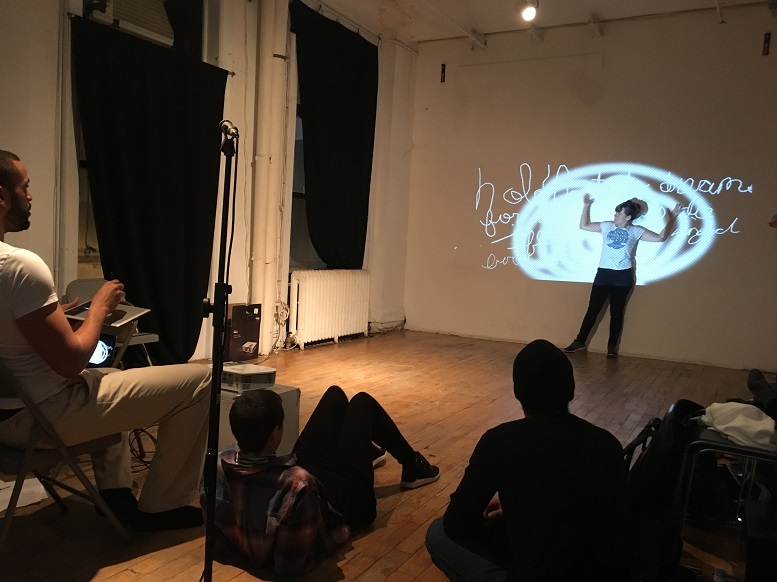
“The Space between the Letters” development rehearsal
My interest in the subject has continuously shifted and grown. As I approach it now, it has turned into an onion, its complexity rendered into layers and layers to be peeled and unpacked. At its center, I see the individual and their day-to-day reality. How do low literacy skills affect and shape a person’s life in regards to their job, health, finances, relationships, and day-to-day decisions? How do feelings of inadequacy factor into these decisions? Which strategies are employed to manage everyday life in a world that is dominated by written language?
Somewhere the middle, I see the (adult) classroom as a microcosm of society. I think about the dynamic between teachers and students. What is being taught and how? Who has the power? What is considered “important” knowledge and why? What is necessary to turn the classroom into a liberating space, and when does it become oppressive?
And on the outer layer, there are larger questions about social inequities and how literacy relates and contributes to those. What are links to class, race, gender and incarceration? How has access to education been used to uphold the status quo? On the other side of that, how can education provide tools to empower adults as citizens? What are the connections between public education and a healthy democracy?
And then, maybe floating on the outside or stuck on the very inside, there is the theme of language as a giver of meaning, of the written word as a way of expression and of the alphabet as a series of drawing-turned-symbol-turned-letter. Can we find possibilities for valuing alternative means of expression and forms of literacy?
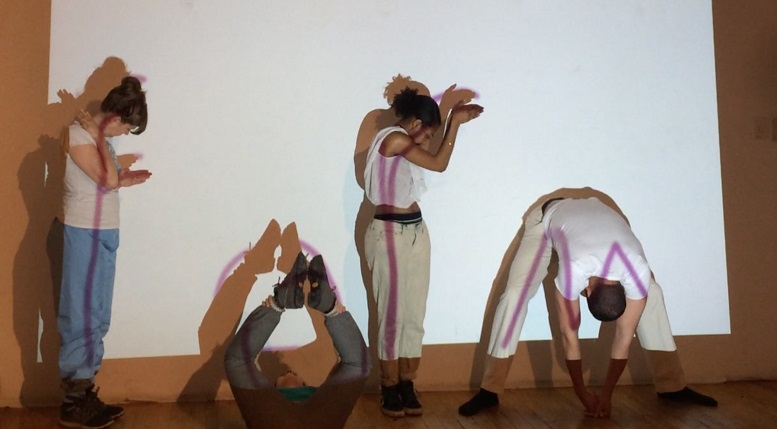
“The Space between the Letters” development rehearsal
The project is being developed without a script. I am working in collaboration with a fluctuating and growing ensemble to create a multidisciplinary performance piece investigating the above questions through a variety of devising techniques and in-depth research. We use interviews with adult students and teachers as material and explore dance and movement as an associative, non-verbal form of communication. We experiment with sound, video and live drawings. The current ensemble includes Lanxing Fu, Claire Moodey, Lindsay Hockaday, Katie Rose McLaughlin, Nicolas Noreña, Jonelle Robinson, Paul P-Funk Stalling, Chris White, and Eleni Zaharopoulos, each occupying one or more roles ranging from choreographer, dramaturg, performer, to video and sound designer. As we work, we continue to consider our own position in society, our roles as storytellers and how to make space for voices other than our own.
Below is an early collection of ideas and concepts we’re tossing around in the rehearsal room. We are only at the beginning of our journey.
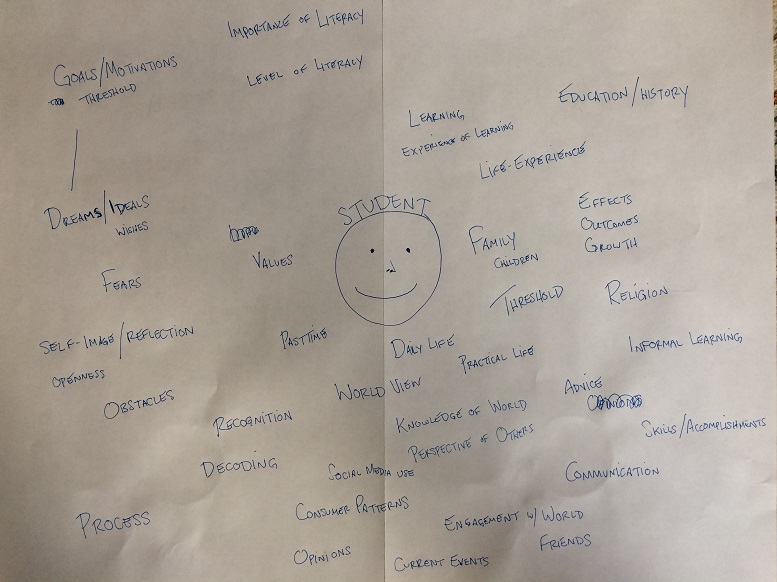
Initial Mind Map for “The Space between the Letters”
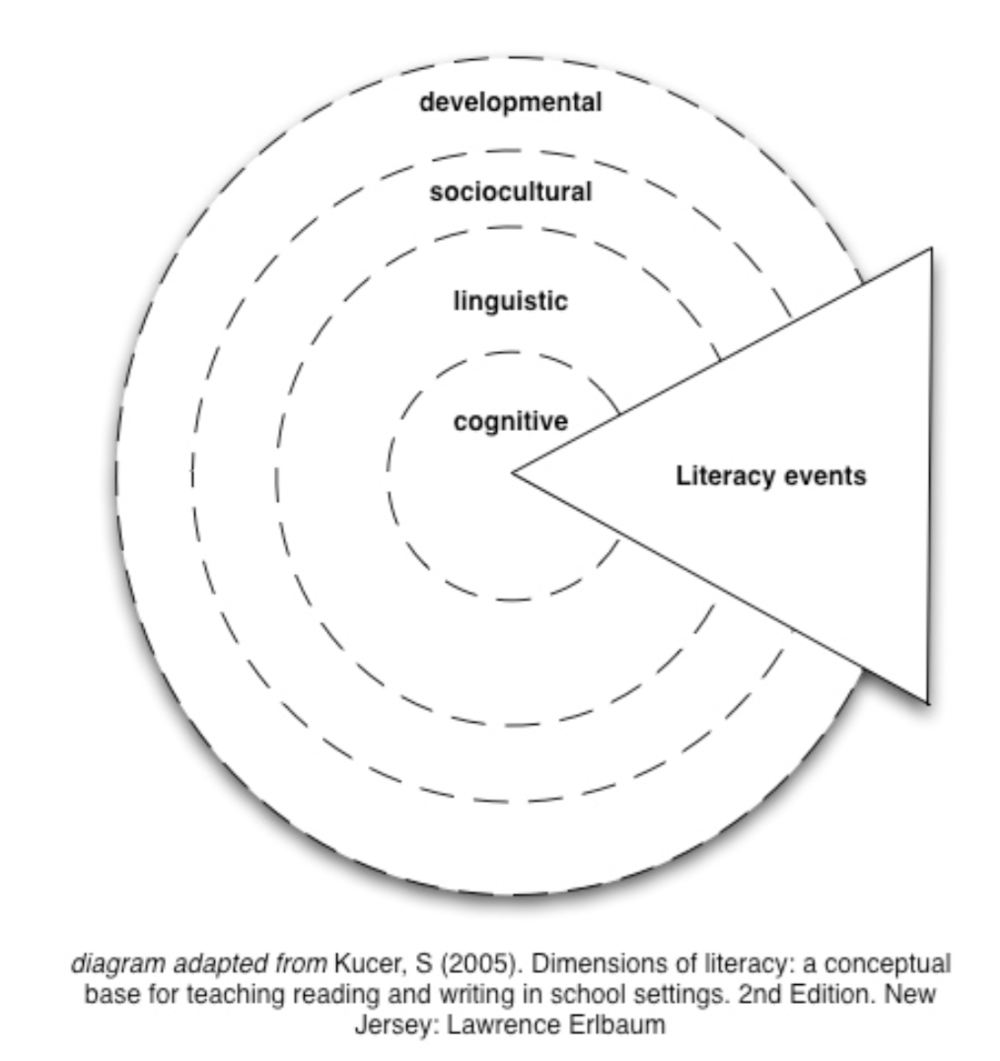
The dimensions of literacy, as discussed by Stephen Kucer in his book “Dimensions of Literacy”
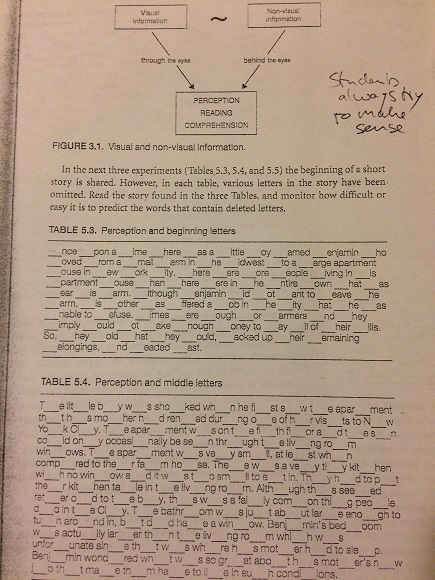
“Students always try to make sense” – Diagram showing how the use of contextual knowledge and information feeds into reading comprehension
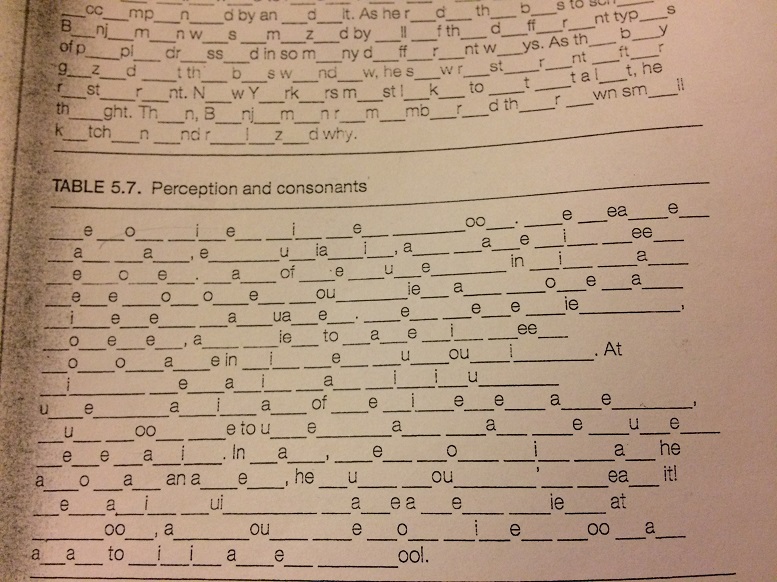
Making sense of a text with missing letters (no first letters, no vowels, no consonants)
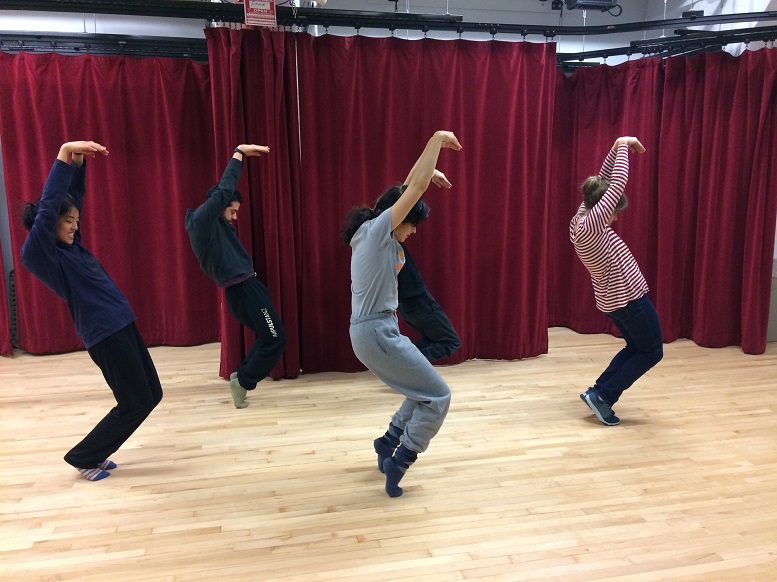
Dancing letters – What if letters had a personality that would interfere with our writing?
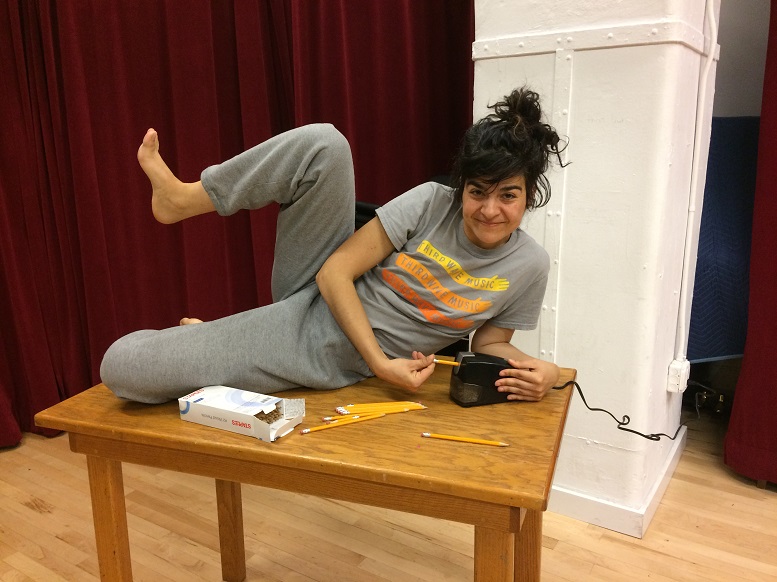
Working with classroom imagery
Some images from the New York Public Library Picture Archive, keyword “school.”
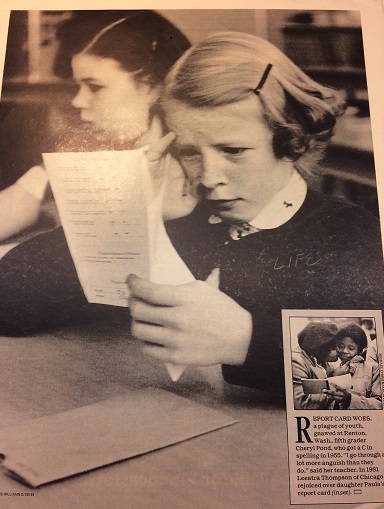
From the New York Public Library Picture Archive

From the New York Public Library Picture Archive

From the New York Public Library Picture Archive
Growing Reading List:
“Miseducation: A History of Ignorance-Making in America and Abroad” by A.J. Angulo
“Social Class and the Hidden Curriculum of Work” by Jean Anyon
“Pedagogy of the Oppressed” by Paulo Freire
“What is Literacy?” by James Paul Gee
“Choosing a School for My Daughter in a Segregated City” by Nikole Hannah-Jones
“Teaching to Transgress” by bell hooks
“Dimensions of Literacy” by Stephen Kucer
“Introduction to Critical Ethnography” by D. Soyini Madison
“I Ain’t Never Read My Own Words Before” by Victoria Purcell-Gates
“Adult Literacy in a New Era: Lessons from The Open Book” by Dianne Ramdeholl
“The Struggle for Democracy in Adult Education” Dianne Ramdeholl
“What is Critical Literacy?” by Ira Shor
“Nurtured by Knowledge: Learning to Do Participatory Action-Research” by Susan E. Smith, Dennis G. Willms, Nancy A. Johnson
Three Miles by Channa Joffe-Walt for This American Life